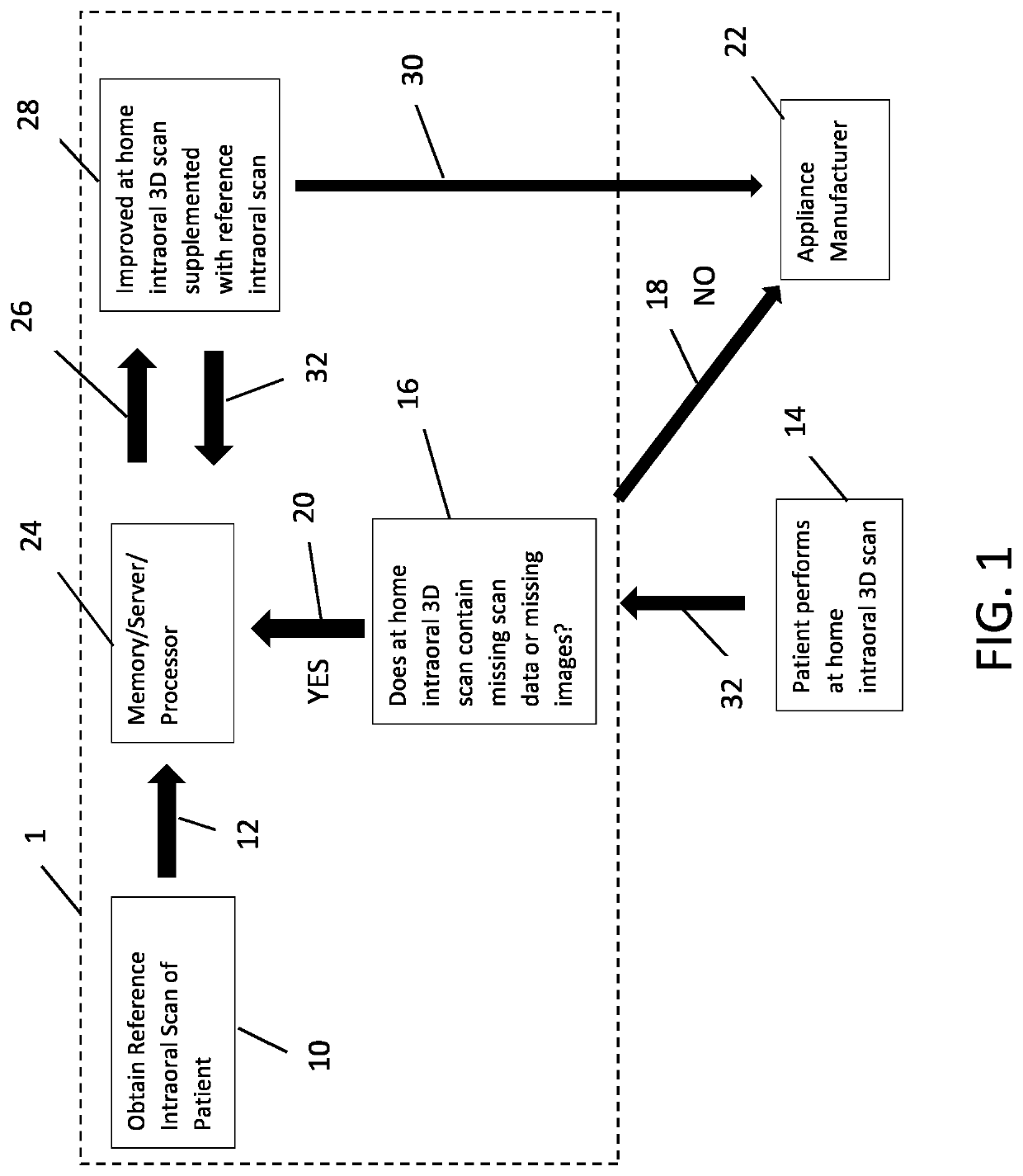Methods for Improving Intraoral Dental Scans
a dental scan and intraoral technology, applied in the field of intraoral dental scans, can solve the problems of not using artificial intelligence to fill in these missing spots accurately, well the final scan works and how accurate it is, and the accuracy of the produced scan far exceeds the accuracy of physical dental impressions. the effect of improving the intraoral scan
- Summary
- Abstract
- Description
- Claims
- Application Information
AI Technical Summary
Benefits of technology
Problems solved by technology
Method used
Image
Examples
Embodiment Construction
[0025]In a first embodiment of the current invention, a method is provided for improving 3D intraoral scans performed at home which allows the dental professional to directly fill in any missing 3D image data with pre-existing 3D image data that was previously obtained from the patient. Referring to FIG. 1, an operator such as a dentist, orthodontist, or other dental technician performs an in-office highly accurate 3D intraoral scan of a patient using a 3D intraoral scanning system such as the Itero Element® or 3Shape TRIOS® to produce a reference intraoral scan 10. Once completed, the reference 10 scan is sent in step 12 to a memory, server, processor, or other device / location 24 which is accessible by both the operator and the patient via a wireless network such as the internet.
[0026]Next, the patient while at home performs a secondary scan 14 using a camera, smart phone, tablet, or any other smart device which comprises the ability to record an image or a series of images and can...
PUM
 Login to View More
Login to View More Abstract
Description
Claims
Application Information
 Login to View More
Login to View More - R&D
- Intellectual Property
- Life Sciences
- Materials
- Tech Scout
- Unparalleled Data Quality
- Higher Quality Content
- 60% Fewer Hallucinations
Browse by: Latest US Patents, China's latest patents, Technical Efficacy Thesaurus, Application Domain, Technology Topic, Popular Technical Reports.
© 2025 PatSnap. All rights reserved.Legal|Privacy policy|Modern Slavery Act Transparency Statement|Sitemap|About US| Contact US: help@patsnap.com

